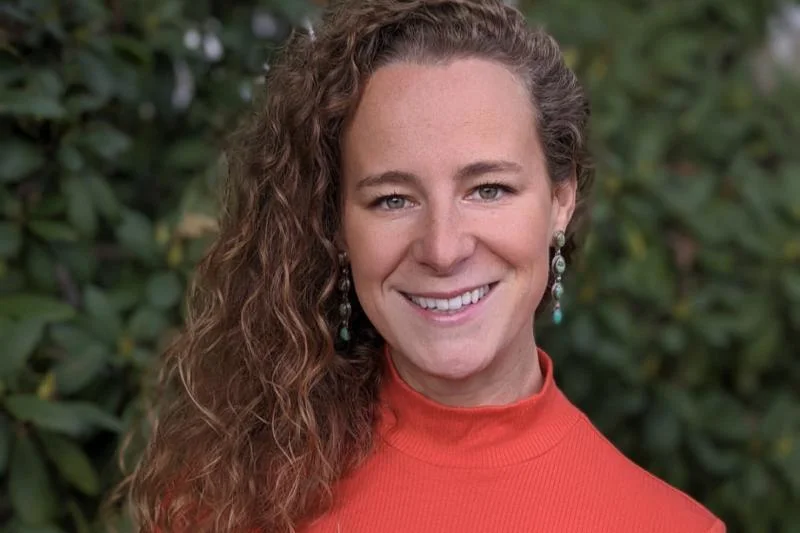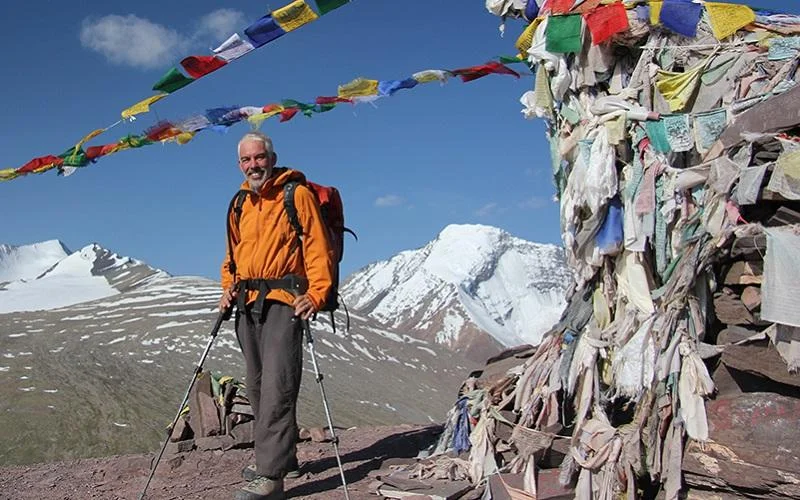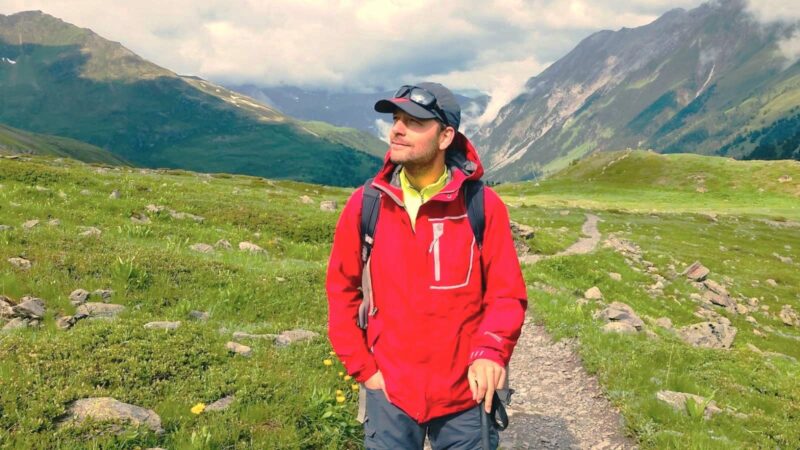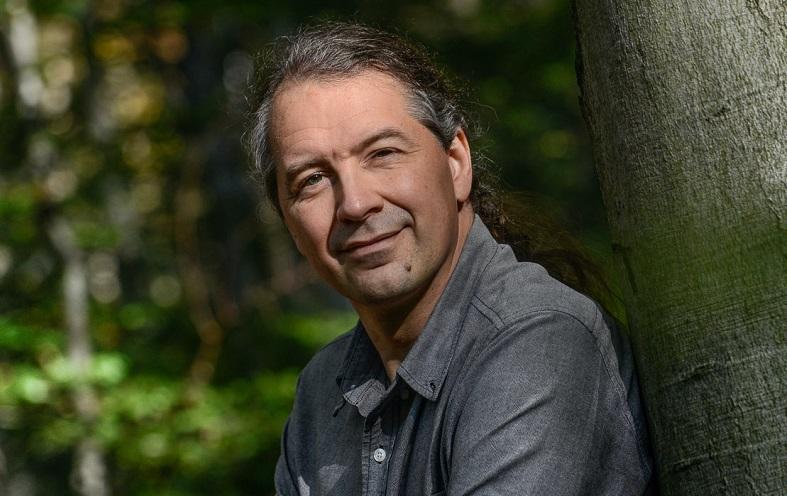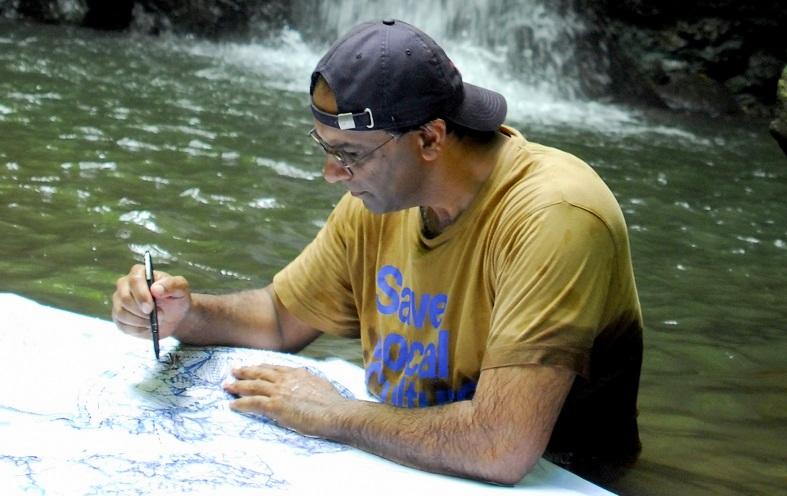
Hitesh Mehta, world-renown Kenyan landscape architect and ecolodge designer, in this interview shares his sustainability story and his thoughts on sustainable tourism trends. Learn how ecotourism and tourism sustainability have changed during the last decades, and which factors are supporting or hindering a more sustainable development of tourism destinations.
Learn about:
- What motivated Hitesh Mehta to focus on holistic design and environmentally/socially friendly ecolodge building solutions, rather than pursuing a traditional career in architecture;
- The main challenges and constraints to planning, designing, building and operating ecolodges;
- Trends that support and hinder a more responsible tourism;
- The main challenges faced by destinations regarding the sustainability of tourism;
- Hitesh’s main lessons learned during his 30 years of work as architect, designer and planner;
- How to best connect sustainability and tourism marketing professionals.
Hitesh, you have worked and consulted as architect, landscape architect and environmental planner in more than 62 countries. Do you remember what initially triggered your interest in holistic design and socially and environmentally friendly practices?
You could say that my interest in holistic and eco-friendly practices was latent – one that was dormant within the confines of my genes and only became alive once I had completed my traditional education training.
Whilst pursuing a Bachelor degree in Architecture at University of Nairobi (1979-85), I began to travel around Kenya with a group of like-minded adventure-oriented friends aka The Rough Gang. The six of us purchased a used Land Rover and before long, we had observed most of the National Parks and learned about the conservation challenges faced by park authorities.
It was during these safaris that I noticed the striking disconnect between the tourist lodge building architecture and the surrounding pristine landscapes. I developed a deep interest in relationships between lodge building architecture and surrounding landscapes. To become a more holistic designer, I then pursued a Masters in Landscape Architecture at Berkeley, which was followed by an academic career as Assistant Professor at the University of Nairobi.
Whilst teaching and working part-time, I became more and more convinced that there were better ways to integrate sustainability and tourism (protecting both endangered species’ habitats and local communities). So I decided to take all three of my professional interests (architecture, landscape architecture and conservation) and combine them into one. Thus, was born my obsession with holistic design and socially /environmentally friendly practices of Ecolodges.
I could also make a case that holistic thinking has been in my genes for over 3,000 years! The main bedrock element of my Jainism (Indian philosophy that began circa 1000 BC) upbringing is the doctrine of Ahimsa…which simply means “non-violence to your fellow humans and non-violence towards non-human beings.”
In my family, we have most probably been vegetarians for over 40 generations! And I have now been a vegan in 52 countries for the past 11 years.
Jain values and principles are evident in all my projects – there is respect for animals, plants, local people and the soul of the place. The approach right from the outset is that of low-impact development. As such, my focus in landscape architecture moved to pristine and fragile natural areas where tourism was uncontrolled, had large social and environmental impacts and required a new planning paradigm to protect the sanctity of those places. I took this concept and started implementing it in my work, which I call vegan planning and design.
Search for authentic experiences has become a veritable trend in tourism. What role does design play in this regard? And what does an ‘authentic’ accommodation look like? How does it differ from conventional accommodation?
Ecolodges are as authentic as accommodations can get in the tourism industry. They are indeed the environmentally and socially friendly tourist accommodation components of Ecotourism and by their definition, can only be found in natural locations and not urban areas.
As such, the design of an authentic ecolodge encourages close interaction with the natural and cultural environment and has an atmosphere that is appropriate to the site’s specific setting.
It is this metaphysical ‘sense of place’ that is one of the key ingredients which distinguish ecolodges from conventional accommodations: They provide a spiritual communion with nature and culture.
The role design plays in ecolodges is that it provides context and conveys a sense of “isolation” and “wilderness” – of being away from the negative visual impacts of modern civilization – glass, steel, concrete and aluminium facades, a common aesthetic of conventional accommodations.
After ten years of research, interviews with architects and professors, eco-consultants, developers, operators, many indigenous communities, and feedback from stakeholders in the ecotourism industry, I developed the following criteria to determine visual authenticity in ecolodges:
- The lodge needs to fit into its specific physical and cultural context through careful attention to form, landscaping, and colour, as well as using vernacular architecture.
- The buildings and plantings need to have a minimal visual and physical impact on the natural surroundings and utilize traditional building techniques during construction.
- Both the architecture and landscape design needs to use the locally available and environmentally friendly building and furnishings materials.

Judging by your experience, which aspects of building and operating an ecolodge tend to be the most challenging? And how can design help to overcome those challenges?
Since building and operating an ecolodge are two totally different phases, I will deal with them separately:
There are several challenges to building ecolodges:
First: Compared to the long history of conventional tourist accommodations, ecolodges are the ‘new kid on the block’. Because of this, it is not easy to find an authentic and committed team of eco-consultants who have a good understanding of what it requires to master plan, design and build ecolodges.
Ecolodge planning and design in this global age of heightened cultural and environmental sensitivity needs to be participatory, holistic and sustainable in all aspects of the planning and design process.
Landscape architectural interventions are crucial for creating authentic experiences and this profession is lacking in most countries in the less developing world.
Second: Whenever there are profits to be made, there is going to be greenwashing. Developers are jumping on the bandwagon so that they can reap rich harvests by touting themselves to be ‘eco’ when they are NOT. I call these people the ‘fish and chicken vegetarians‘ of the tourism world.
I have had many experiences where clients come to me stating that they want to develop an eco-project without really knowing what it means. Then, as the project goes along, they change their minds as they begin to understand the commitment it takes to build an ecolodge.
Third: Many ecolodge projects are still developed by husband and wife teams, or by single individuals, and therefore the money is always a constraint. The latest ecolodge project that I am building in Dominica, Eastern Caribbean is one such example. The project, which started in 2006, has stopped and started three times now because of insufficient funds. Good news is that it will be ready this coming winter!
There are several constraints to operating ecolodges:
- Because of the remote locations, servicing the ecolodge is always a challenge, and lack of government-funded infrastructure creates logistical problems.
- Freshwater resources and electricity from the grid are few and far between, so ecolodges need to be self-sufficient.
- Solid waste disposal is a serious challenge, especially in areas where there is wildlife.
- Sewage seep-off that causes groundwater pollution is always a cause for concern.
The secret to how the developers can overcome the above challenges and save money in ecolodges is through passive design.
If you use passive design techniques to reduce costs of avoiding retaining walls, water and energy resourcing, air conditioning systems etc. and construction techniques that use local labour and materials, then ecolodges end up being cheaper than conventional accommodation, as they use renewable sources of energy and natural air-convection cooling.
I believe strongly in using materials with the least energy embodiment. By this, I mean materials that have travelled the least distance and those that have little energy used to manufacture them. In most cases, I strive to use local natural materials. I carry out research during the site analysis stage to identify local artisans and craftspersons who work well with local materials. For the ecolodge in Dominica, no earth-moving machinery was used in the project.
Good design does not need to be expensive. It is a myth that ecolodges are more expensive than traditional resorts. If well planned, designed and constructed, ecolodges on the contrary are cheaper.
In 2006, National Geographic Adventure magazine featured you as one of five Sustainable Tourism Pioneers in the world. In your view, (how) has a sustainable tourism scene evolved since then?
The last 11 years have been a game-changer in the sustainable tourism world! It was in 2006 that Al Gore released his Oscar-winning documentary, “An Inconvenient Truth”. This was followed by other documentaries, like Leonardo di Caprio’s “11th Hour” and Louie Psihoyos’s “The Cove”, which graphically brought to light the dangers of global warming, the threat to planet ecosystems, food famines, unsustainable homocentric approaches etc.
Many people in the tourism and travel industry now recognize that environmental and social stewardship is good for business, good for the planet, and is vital to the future of travel and tourism.
We have also reached a tipping point whereby the global traditional hospitality industry is more widely accepting sustainable tourism.
In the past ten years, a lot of progress has been made in sustainable travel: with input from scientists and conservationists, the top 100 travel and tourism companies have written a joint report to lead the way forward to low climate-risk travel.
Several international airlines have tested biofuel-operated commercial flights. The United Nations Foundation initiated the now well-established Global Sustainable Tourism Council (GSTC), whose Global Sustainable Tourism Criteria are helping ensure that the tourism industry continues to drive conservation and poverty alleviation.
There are currently numerous sustainable tourism organizations, several conferences every year and even an International School of Sustainable Tourism in the Philippines, where I am a board member.
The future of sustainability in indeed good, with the United Nations designating this year as the International Year of Sustainable Tourism for Development.
And eco-friendly design has evolved in leaps and bounds. I would say that in the last decade, eco-design has taken a quantum leap because of climate change concerns, rising oil prices and, most importantly, heightened awareness amongst developers and designers.
There is now also a proliferation of green design certifications, like LEED, BREEAM, S.I.T.E.S., EARTHCHECK, etc. The EARTHCHECK Building Planning and Design Standard (BPDS) provides guidelines, tools and indicators used for assessment and certification and to assist designers, architects and developers in the planning and design phase of sustainable buildings and precincts.
Ecolodges are mushrooming all over the world and the only way is UP. I see them becoming increasingly popular because we have more and more people moving to urban areas, and so when they go on vacation, they need to visit natural areas for rest and relaxation.
The baby boomer generation not only have a lot of expendable income but also want to make a difference when they travel. This will ensure that sustainable tourism will establish itself over the next decade and beyond.
From an architecture and design point of view, which trends do you observe which might support or hinder a better, more responsible or sustainable tourism?
Trends that support more responsible tourism:
- Rise in community-owned and operated ecolodges, as well as projects that respect the local cultures and architecture.
- The influx of smaller but higher-end boutique hotels that are eco, luxurious and many of which have wellness centres/spas.
- A growing number of eco-refurbishments and expansions at existing lodges.
- Experience-oriented hotels and lodges. Tourists are searching for experiential travel and authentic connections with local peoples and nature.
- Developers and architects who are warming up to green design and technologies, such as fuel cell technology, more efficient solar and wind power, wave generated power, low impact light fittings that give out warm glows, and environmentally friendly materials for interior design that are made from recycled products.
Trends that hinder more responsible tourism:
- Adulation of so-called “star architects”, whose ego-full designs are mostly aesthetically driven but lacking in environmental or social consciousness.
- The sexy-looking modernism style, which uses bare concrete, steel, glass and aluminium – materials that are resource depleting and which are not contextual to the local setting.
Your firm HM Design practices a quadruple bottom line philosophy. In a nutshell, what does this mean? How does it lead to competitive advantage and client benefit? And to what extent could it be applied by tourism businesses, such as hotels or tour operators?
Every one of my office projects in the last fifteen years has espoused what I have termed as the “quadruple bottom line” approach to sustainability: Financial, Social, Environmental and Spiritual. After having worked in over 60 countries and in some of the most remote parts of the planet, I have felt that without the fourth aspect – spiritual, one cannot attain true sustainability.
Our ‘continuity of the vernacular’ eco-friendly projects is those that provide our clients’ guests with a spiritual union with nature and culture. We design places that cater to travellers who want to learn about other places and local people, rather than just escape their familiar surroundings, but at the same time make a positive difference to the locations they visit. These unique experiences provide a competitive advantage to our clients.
Depending on the wishes of the clients, we employ metaphysical analysis in on-site workshops. Those help all consultants and clients to use their respective senses to understand and connect at a deeper level to the land. And then through both landscape and building planning and design, we ensure that our clients’ hotel/lodge guests can employ all their six senses to experience the ‘gestalt’ of the site.
Tourism businesses, such as hotels or tour operators, can apply these metaphysical approaches to learn about the land. And in doing so, they are able to immerse their clients into the ‘chi’ (energy) of the land.
The UN has declared 2017 the International Year of Sustainable Tourism for Development. In your view, which are the main destination challenges right now regarding the sustainability of travel and tourism?
The rising middle classes in the top two MOST populous countries in the world – India and China – mean that there are more people willing to travel internationally. By the end of this year, a new record of annual international travellers will have been set: 1.2 billion.
Unfortunately, the infrastructure (roads, trails, solid waste management, sewage treatment, power supply, water sourcing etc.) is not growing in parallel to tourism arrivals, and this is placing extreme strain on established destinations.
I was in Cancun, Mayan and Tulum Riviera, and that whole destination is expanding to a point where mangroves are still being destroyed to cater to conventional tourist accommodation demands.
Another destination challenge regarding sustainable tourism is cruise tourism. As statistics have shown, it is anything but sustainable and is growing exponentially. Ships that accommodate over 6,000 people are not rare. Since cruise ship visitors are not staying overnight, the host destination hardly makes $30 per person per day!
Economic leakage will continue to be a challenge in the years to come. In the conventional mass-tourism world, almost 80% of the profits leave the host community and ends up in the country where the hotel (chain) has its headquarters.
In contrast, over 90% of the money made in an ecotourism operation stays in the country, and more specifically in the local community. Ecotourism encourages traveller philanthropy and this helps to sustain local livelihoods. Through ecotourism, local communities have benefited through the building of schools, health clinics, student scholarships etc.
Because of sea-level rise due to climate change, ocean-based destinations are the first ones to suffer. I foresee this as a serious destination challenge in the coming decade. The Maldives is already affected.
Which are your key lessons or insights gained during your 30 years of work as an architect, designer and planner?
- Learn to compromise but never let the ‘tail’ wag you. If you believe in something, don’t let anyone or anything stop you. Never give up in what you believe. Keep on knocking at doors and one day, the door that will open will change your life!
- Education and awareness are the keys to making change. Spend time to educate clients and local communities and be patient.
- In our field, the best results are achieved when you have practised ego-less design with an eco-full approach! Employ a bottom-up approach to planning so as to empower communities and local consultants. Bring to the drawing table local people and consultants on day one of the planning and design processes.
- Never look into imposing your designs/ego onto a landscape. Use your six senses to immerse into the landscape and then lightly place your buildings, so they harmonize rather than dominate.
 Imagine you could turn back time and start all over again. Knowing what you know now about business and sustainability, what would you do differently?
Imagine you could turn back time and start all over again. Knowing what you know now about business and sustainability, what would you do differently?
Great question! I would have started much earlier to practice green principles in my work. In my first 5 years as an architect and landscape architect, I ran a conventional design practice without any environmental or social consciousness. But then again, everything happens for a reason and it happens when it is meant to happen. I could not have forced the situation. I needed to have gone through the traditional world to truly appreciate the eco-world!
My philosophy in life is to never regret anything because I look at myself as a confident person and capable of making rational, logical decisions at any given point in time.
Sustainability and tourism marketing professionals often don’t quite speak the same language. How can design help to connect the two, to encourage and support sustainable tourism practices?
Design is a great connector. If you look at the conventional tourism destinations, the first image that comes to mind is of architectural design: Paris is Eifel Tower, Sydney – Opera House, London – Big Ben, San Francisco – Golden Gate Bridge, New York – Empire State Building or Statue of Liberty etc.
Through good planning and design, you can create memorable experiences that help people transcend into another level. Their memory and imagery of the place are influenced by its architectural and landscape design.
For example, in the Crosswaters Ecolodge and Spa, Southern China, for which I was the team planning and design leader, the arrival bamboo bridge has become both the marketing ‘image’ and brand for the project, as well as making the sustainability (bamboo construction) statement right at the entrance.
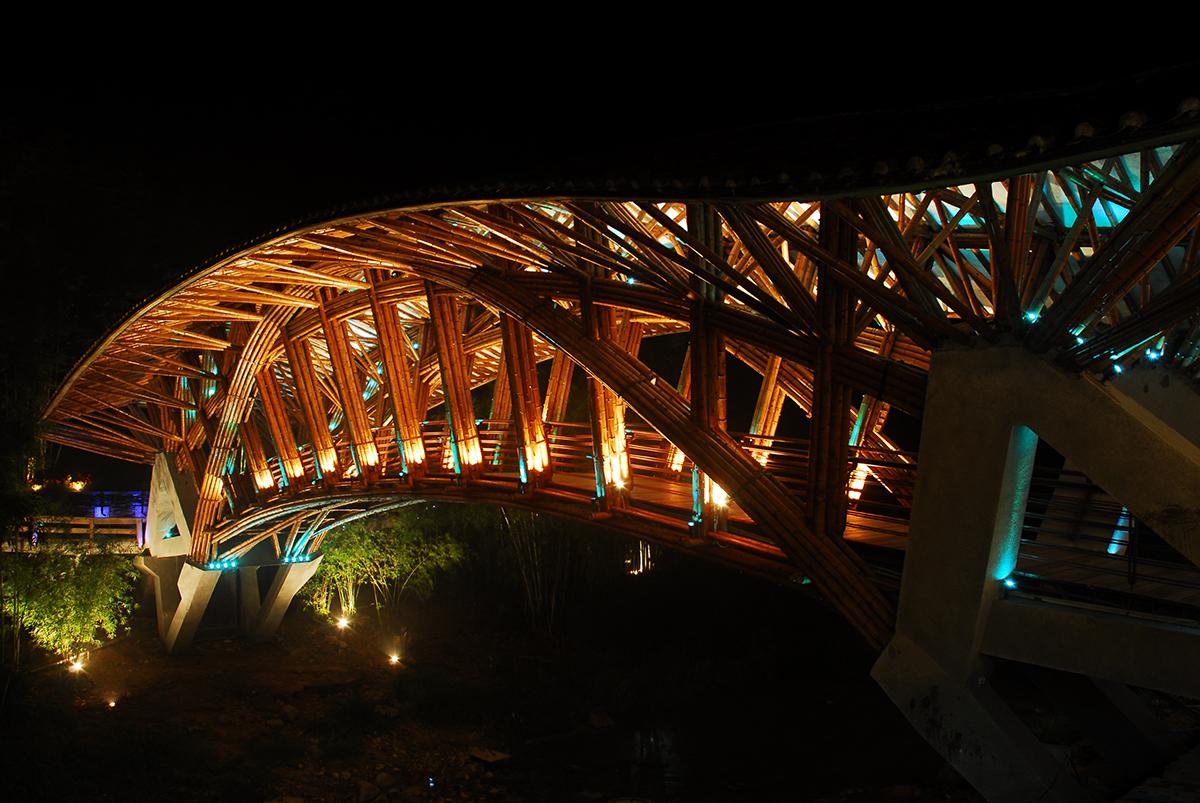
One of my great achievements as an ecoArchitect and ecoLandscape Architect is in the way my work, research and latest book have led to a beautiful integration of “eco” and “luxury”, thereby creating a truly holistic experience in the tourism and travel industry.
In the 1980s and 1990s, the perception of an eco-lodge was an accommodation facility for low and middle-end travellers who would sleep on the floor and share common bathrooms.
I strongly believe that my presentations on authentic ecolodges over the past ten years around the world (over 50 countries), as well as the sale of over 8,000 books, have been successful in connecting sustainability and tourism marketing professionals.
My book Authentic Ecolodges has also focused on design interventions that make ecolodges aesthetically-pleasing whilst also being sustainable.
Your 3 bits of advice to independent hotel owners eager to embrace sustainability?
- Do your homework and research about lessons learned by others. Visit a few properties and learn about the dos and don’ts. Also, read books on case studies on how other hotel owners have embraced sustainability and created a profitable business.
- Make sure you have a good group of consultants whose heart is in the right place and who also want to make a difference. Select architects, interior designers and landscape architects with proven records in sustainability.
- Do the ‘cradle to cradle’ research on building materials. There is loads of great information on the internet. Compare prices. Check out reviews.
Thank you, Hitesh.
Connect with Hitesh Mehta on LinkedIn or learn more about his work here.
Enjoyed our interview with Hitesh Mehta on holistic architecture, ecolodge design and tourism sustainability? Spread the word!



